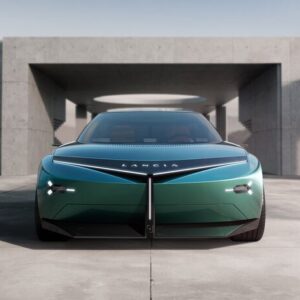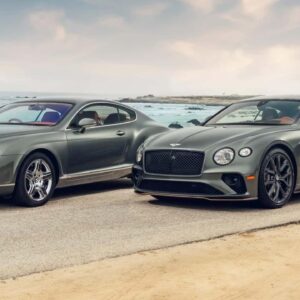The active roll stabilization system will be optional, however.
The updated Mercedes-AMG G63 will get an all-new active roll stabilization system pioneered for the mass market by McLaren. Wards Auto spoke to the engineers responsible for the revised G-Class, which they said will debut in mid-2024 as a 2025 model. This aligns with previous reports that the current G-Class production is scheduled to stop early in 2024. The all-electric EQG will also debut next year, and it will be made and sold alongside its traditionally powered sibling.
But the big news for today is the new kinetic suspension, which will replace the traditional anti-roll bars in the high-performance G. Instead of a conventional anti-roll bar, the G63 will be equipped with the active roll stabilization system from the latest SL and AMG GT. It consists of a dynamic damping system with interconnected electro-hydraulic flow valves that can constantly adjust the rebound and compression properties of the systems.

The compression units of the dampers on one side of the car are connected to the rebound units of the dampers on the other side via the flow valves. When a wheel on one side hits a bump and compresses, the piston in the damper forces the fluid across to the other side of the car to aid with the rebound. Both sets of dampers (front and rear) are controlled by a metal sphere filled with nitrogen, which can collect excess hydraulic fluid and send it where needed via the flow valves.
Essentially, Mercedes has found a way to better control the G63’s damping from side to side and front to rear. And because it’s an active system, the driver can control how the system reacts depending on the drive mode.
Thanks to the control unit, rebound and compression are no longer connected, granting Mercedes a much broader spectrum to work with, which means Comfort mode will be softer than before and Sport will be tauter than before.

According to Wards Auto, the system will be an optional extra for the G63, but it’s unclear whether it will be available for the rest of the range. We’re guessing it will appear in the EQG because the EV will have a lot more weight to carry around, and a system like this will help it feel less like a Heffalump.
As clever as this sort of stabilization system is, it’s not new. This type of kinetic suspension system was originally developed by Chris Heyring, an Australian inventor, while Tenneco industrialized the idea with its Monroe brand. Citroen used it in the World Rally Championship in the early Noughties before the FIA banned it. It eventually appeared on the McLaren 720S and later on Rivian R1 models, proving its benefit to both supercars and the super heavy. On a blingy SUV like the G63, it could be excessive, but overkill is underrated.





